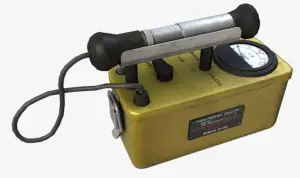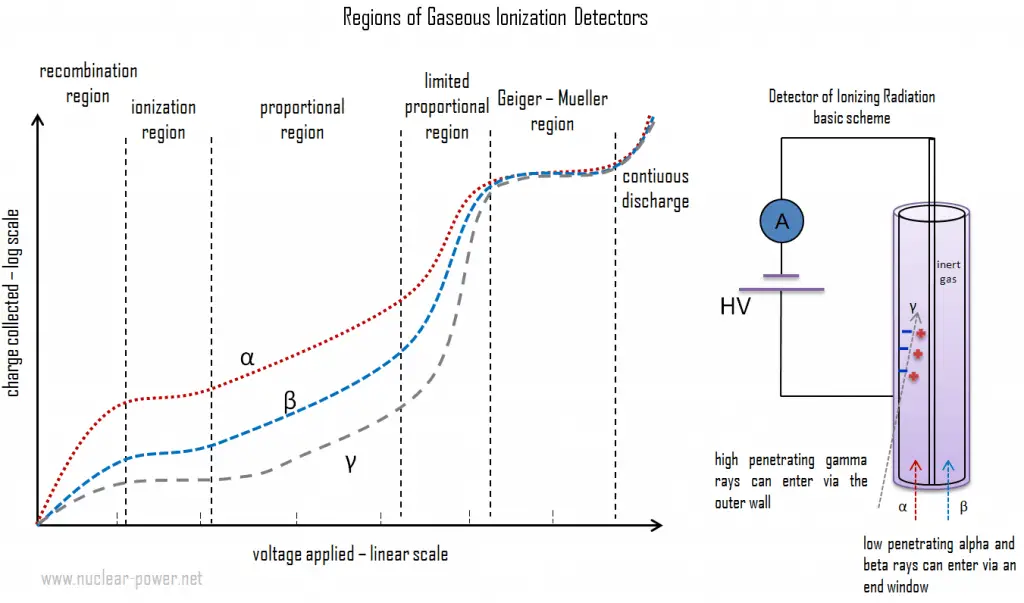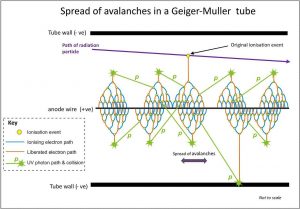
The relationship between a detector’s applied voltage and pulse height is very complex. Pulse height and the number of ion pairs collected are directly related. As was written, voltages can vary widely depending upon the detector geometry, gas type, and pressure. The figure schematically indicates the different voltage regions for alpha, beta, and gamma rays. There are six main practical operating regions, where three (ionization, proportional, and Geiger-Mueller region) are useful for detecting ionizing radiation. These regions are shown below. The alpha curve is higher than the beta and gamma curve from the recombination region to part of the limited proportionality region due to the larger number of ion pairs produced by the initial reaction of the incident radiation.


Geiger-Mueller Region
In the Geiger-Mueller region, the voltage and thus the electric field are so strong that secondary avalanches can occur. These avalanches can be triggered and propagated by photons emitted by atoms excited in the original avalanche. Since these photons are not affected by the electric field, they may interact far (e.g., laterally to the axis) from the primary avalanche, and the entire Geiger tube participates in the process. A strong signal (the amplification factor can reach about 1010) is produced by these avalanches with shape and height independently of the primary ionization and the energy of the detected photon. Detectors operated in the Geiger-Mueller region can detect gamma rays and all types of charged particles that can enter the detector. These detectors are known as Geiger counters. The main advantage of these instruments is that they usually do not require any signal amplifiers. Since the positive ions do not move far from the avalanche region, a positively charged ion cloud disturbs the electric field and terminates the avalanche process. In practice, the avalanche’s termination is improved by using “quenching” techniques. In contrast to proportional counters, the energy or incident radiation particle can not be distinguished by Geiger counters since the output signal is independent of the amount and type of original ionization.